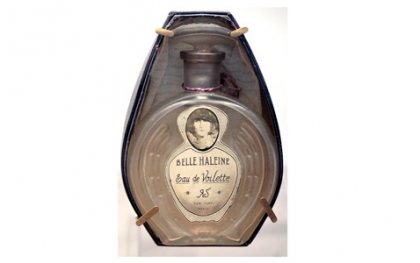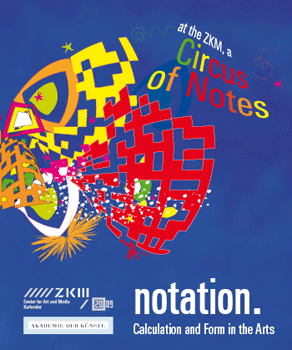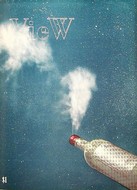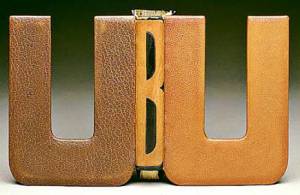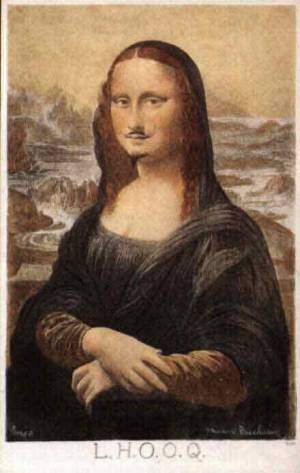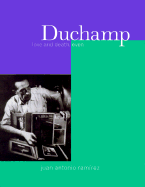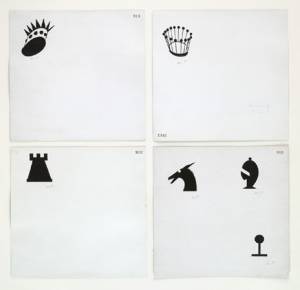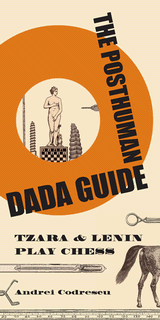Duchampian News & Views
-
Monitor Interviews the Artist
March 6, 2009On April 9th, the British Film Institute in Southbank will show "Monitor Interviews the Artist", a selection of interviews with and films about artists, including Max Ernst, Marcel Duchamp, René Magritte and Andy Warhol. The films come from the archive of the British TV show "Monitor", which ran during the 1950s and was known for its intellectual and thought-provoking take on the arts.
read more... -
Duchamp’s Belle Haleine, Eau de Voilette Sells for $11 Million at Auction
March 6, 2009 Marcel Duchamp's Belle Haleine, Eau de Voilette sold for $11 million as part of a Christie's auction of art belonging to the late fashion designer Yves Saint Laurent. The work, which surpassed its esitmated price of $1 million, was described by Dada scholar Francis Naumann as “one of the most provocative works of art ever made, a simple bottle of perfume whose liquid long ago evaporated, but whose essence, to be sure, will continue to influence artists long into t.. read more... -
“Notation” at the ZKM | Center for Art and Media in Berlin
February 21, 2009 The exhibit "Notation: Calculation and Form in the Arts", which has its opening tomorrow, " is dedicated to the spectrum of diverse artistic processes existing between the conception and the work". The exhibit features work from a diverse spectrum of artists, including Marcel Duchamp. It includes all types of art, from choreography and music to paintings. In addition, it seeks to explore the connections between science and art as well as .. read more... -
View Magazine’s Marcel Duchamp Special Issue, 1945
February 20, 2009 "Scholars often see View's most valuable contribution as its role in the introduction of Surrealist art to an American audience during the years 1940-1947. Although several recent studies examine the magazine generally within the context of Surrealism in America, few focus closely on the individual issues themselves...The Marcel Duchamp issue in March of 1945 appeared at a moment when Ford's magazine was enjoying some relative success, and Breton's own .. read more... -
Ubu Roi, book binding by Marcel Duchamp and Mary Reynolds
February 20, 2009 "This binding is perhaps the best known and most successful of the collaborations between Reynolds and Duchamp. On November 26, 1934, Duchamp visited his close friend Henri-Pierre Roché in Arago and excitedly reported on a binding that he had just designed for Alfred Jarry’s Ubu Roi that Mary Reynolds was going to execute. Reynolds and Duchamp created out of the binding itself an extraordinarily clever pun. Both the front and back covers are cut-out 'U&rsquo.. read more... -
Marcel Duchamp
February 20, 2009"With so much ado about his urinals and wheels, it’s easy to forget that Marcel Duchamp was also an exceptional painter. But Duchamp rejected painting. He rejected, that is, his talent. The fact that an exceptional painter rejected painting — and ultimately may even have rejected art — is precisely what lends Duchamp’s work its disconcerting gravity."
read more... -
Duchamp, Love and Death, Even
February 20, 2009 "After Duchamp's death a final set was released in French under the title 'Marcel Duchamp: Notes' (1980) and followed by its English translation in 1983. This has provoked a stream of publications in English as well as further offerings from Europe and elsewhere. One of these is Juan Antonio Ramirez' 'Duchamp: love and death, even,' originally published in Spanish and subsequently translated into English. It provides .. read more... -
Duchamp, Man Ray, Picabia, and Chess
February 20, 2009 In his article All Artists are Not Chess Players Allan Savage looks at the chess playing of Man Ray, Marcel Duchamp, and Francis Picabia. All three were fascinated by the game and incorporated it into their artwork. Man Ray blieived that a square grid, such as a chess board, was "the basis for all art… it helps you to understand the structure, to master a sense of order" and he incorporated chess imagery into much of his art. Picabia was als.. read more... -
Excerpt from The Posthuman Dada Guide: tzara and lenin play chess
February 20, 2009"This is a guide for instructing posthumans in living a Dada life. It is not advisable, nor was it ever, to lead a Dada life. It is and it was always foolish and self-destructive to lead a Dada life because a Dada life will include by definition pranks, buffoonery, masking, deranged senses, intoxication, sabotage, taboo breaking, playing childish and/or dangerous games, waking up dead gods, and not taking education seriously."
read more...





